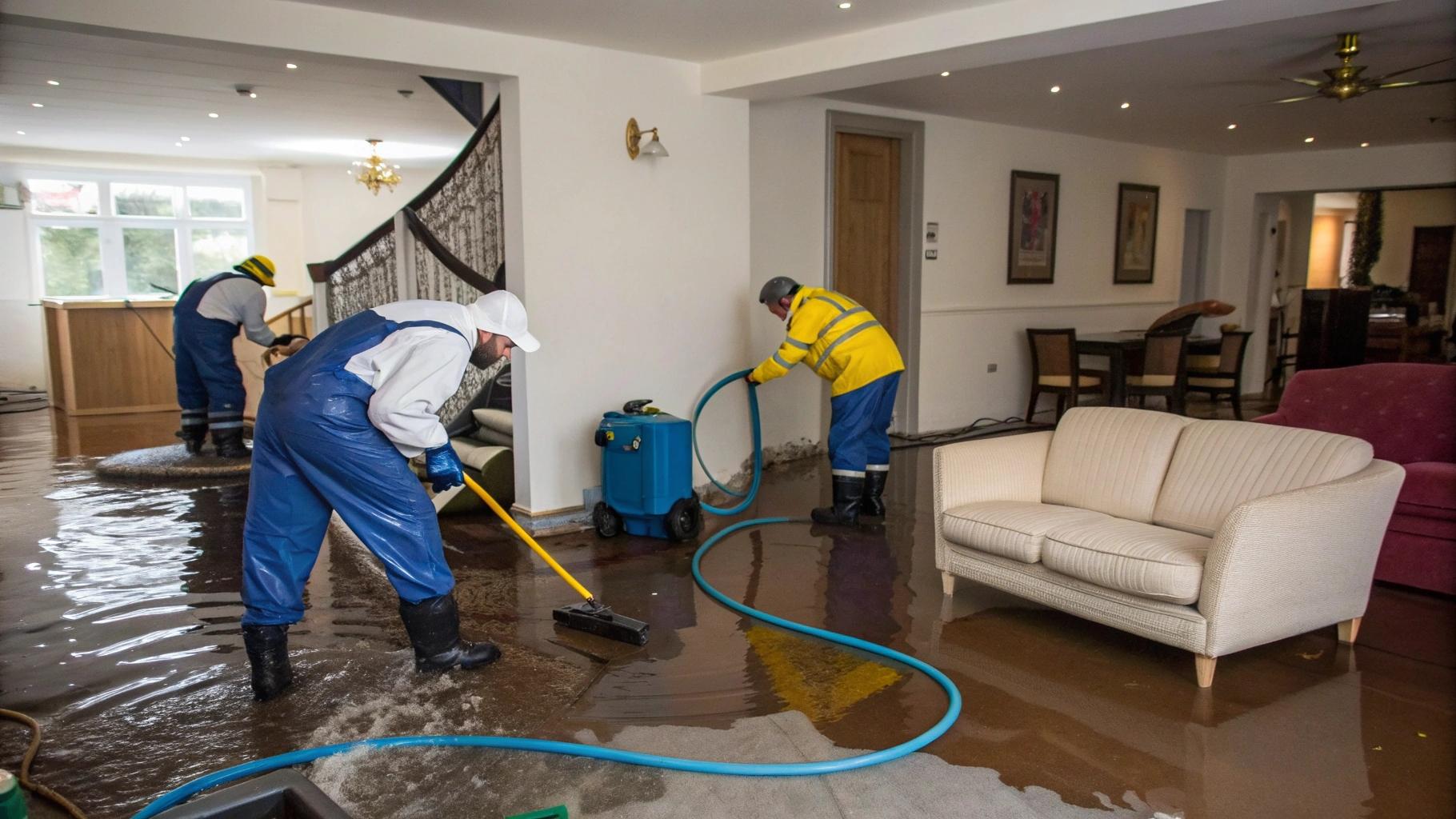How Does Water Damage Restoration Differ for Hidden Leaks vs. Large-Scale Flooding?

Summary
Hidden leaks and large-scale flooding both cause significant water damage, but the restoration processes are quite different. Hidden leaks develop slowly behind walls, floors, or ceilings and often go unnoticed, leading to mold growth and structural issues. Detecting and fixing them requires specialized tools like moisture meters and thermal imaging, followed by targeted drying and possible mold remediation. Large-scale flooding, on the other hand, involves sudden, high-volume water intrusions from storms, burst pipes, or sewage backups. Restoration focuses on rapid water extraction, large-scale drying, disinfection, and structural repairs. While hidden leaks typically require precise, localized work, flooding demands urgent, extensive intervention, often with higher costs and health risks due to contamination.
-
Introduction
Water damage is one of the most common and costly issues homeowners and property managers face. But not all water damage is created equally. The restoration process can vary significantly depending on the source and scale of the damage, especially when comparing hidden leaks to large-scale flooding incidents.
In this blog, we’ll break down the key differences in Water damage repair for these two scenarios, helping you understand what to expect and how to respond effectively.
What Are Hidden Leaks?
Hidden leaks are slow, often undetected water intrusions that occur behind walls, under floors, or in ceilings. They’re typically caused by:
-
Leaky pipes or plumbing joints
-
Faulty appliances (e.g., dishwashers, washing machines)
-
Roof or window seal failures
-
HVAC condensation issues
Because they’re not immediately visible, hidden leaks can go unnoticed for weeks or even months. Without timely water damage restoration, this prolonged moisture can lead to mold growth, structural damage, and air quality issues.
What Is Large-Scale Flooding?
Large-scale flooding refers to sudden, high-volume water intrusions that affect a wide area of a property. Common causes include:
-
Natural disasters (e.g., hurricanes, heavy rainstorms)
-
Burst pipes or water main breaks
-
Sewer backups
-
Overflowing bathtubs or toilets
Flooding is usually immediately visible and requires urgent action to prevent extensive damage and health hazards.
Key Differences in Restoration Process
Let’s explore how restoration differs between hidden leaks and large-scale flooding:
1. Detection and Assessment
Hidden Leaks:
-
Requires moisture meters, infrared cameras, and thermal imaging to locate the source.
-
Often involves invasive inspection (e.g., removing drywall or flooring).
-
Damage may be localized but deeply embedded.
Flooding:
-
Damage is obvious and widespread.
-
Assessment focuses on the extent of saturation, contamination level, and structural integrity.
-
Categorized by water type (clean, gray, or black water).
2. Water Extraction and Drying
Hidden Leaks:
-
Minimal standing water; focus is on drying damp materials.
-
Use of dehumidifiers, air movers, and targeted drying systems.
-
May require mold remediation if the leak persists.
Flooding:
-
Requires high-capacity pumps and industrial-grade vacuums.
-
Large-scale drying with multiple air movers, dehumidifiers, and desiccant systems.
-
Often it involves the removal of flooring, drywall, and insulation.
3. Contamination and Health Risks
Hidden Leaks:
-
Risk of mold and mildew due to prolonged moisture.
-
Air quality testing may be needed.
-
Usually Category 1 (clean water) unless mold or bacteria develop.
Flooding:
-
High risk of contaminants, especially with Category 3 (black water).
-
Requires disinfection, sanitization, and protective gear.
-
Potential for sewage exposure, chemical runoff, or pathogens.
4. Restoration Time and Cost
Hidden Leaks:
-
Restoration is slower and more surgical.
-
Costs vary based on the extent of hidden damage and mold remediation.
-
Insurance may or may not cover it, depending on the cause.
Flooding:
-
Restoration is faster-paced but more labor-intensive.
-
Higher costs due to volume of water, material loss, and emergency response.
-
Often covered by flood insurance or disaster relief.
Final Thoughts
Whether dealing with slow, hidden leaks or sudden, large-scale flooding, timely and professional intervention is essential. Hidden leaks require careful detection and targeted drying to prevent long-term damage, while flooding demands rapid water removal, structural drying, and sanitation. In both cases, effective water cleanup is a critical step to protect your property, prevent mold growth, and restore a safe, healthy living environment.
FAQs
Q1. What is the difference between hidden leaks and large-scale flooding in Water damage repair?
A: Hidden leaks are slow and localized, requiring precise detection, while large-scale flooding is sudden and widespread, needing rapid water removal and structural repairs.
Q2. How are hidden leaks detected?
A: Professionals use moisture meters, thermal imaging, and sometimes invasive inspection to locate leaks behind walls, floors, or ceilings.
Q3. Are health risks different for hidden leaks versus flooding?
A: Yes, hidden leaks mainly cause mold and air quality issues, while flooding can involve contaminated water, pathogens, and chemical hazards.
Q4. How long does restoration take for each type?
A: Hidden leaks are slower and targeted, usually taking days to weeks, whereas flooding is more extensive and can take weeks to months to fully restore.
Q5. Does insurance cover both types of water damage?
A: Coverage varies; sudden leaks may be covered under standard policies, while flooding often requires separate flood insurance or disaster coverage.






